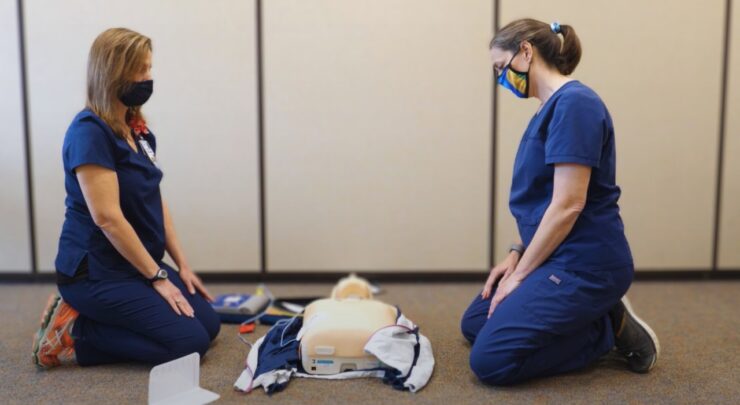Cardiopulmonary resuscitation (CPR) is a life-saving emergency procedure applied when a person’s breathing or heartbeat has stopped.
It involves chest compressions and sometimes rescue breaths to maintain the flow of oxygenated blood to the brain until further measures can restore regular heart action. The significance of CPR cannot be overstated. It acts as a critical interim procedure that sustains life until advanced medical help arrives.
Immediate application of CPR can double or triple the chances of survival following sudden cardiac arrest, reinforcing its relevance in preserving life.
Basic Anatomy and Physiology
The heart, a muscle, pumps blood throughout the body, while the lungs exchange oxygen and carbon dioxide. Knowing how these organs work is essential for understanding how CPR aids in emergencies.
These systems are interlinked, with the circulatory system distributing oxygen-rich blood and the respiratory system managing gas exchange. Mastery of their functions is foundational to comprehending CPR’s impact on sustaining life during cardiac emergencies.
Recognizing Cardiac Emergencies
Recognizing early signs, such as chest discomfort, shortness of breath, and nausea, is crucial. There are many reasons why these symptoms might appear. Stress is just one of them, which is why it is important to relax every now and then.
Identifying these symptoms enables swift action, possibly averting full-blown cardiac arrest. Early identification and response to cardiac arrest, showcased by sudden loss of responsiveness and normal breathing, are pivotal. Discerning respiratory distress, observable through rapid breaths, is equally vital, necessitating immediate intervention.
The Chain of Survival
The Chain of Survival comprises early recognition and calling for help, early CPR and First Aid, early defibrillation, and advanced life support. Each link is vital, with timely execution of each step significantly enhancing survival prospects.
Every link in the Chain of Survival is integral. Swift recognition and action initiate the life-saving process, with subsequent steps sequentially elevating the chances of survival and recovery.
Performing Hands-Only CPR
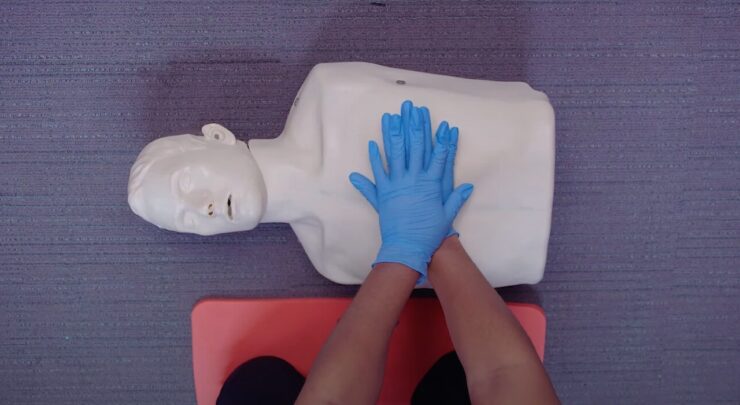
Hands-only CPR crucially emphasizes chest compressions, maintaining essential blood flow vital for survival. Following accurate steps, including right-hand positioning and maintaining a suitable compression rate, is fundamentally essential.
This method is indispensable as it enables any bystander, regardless of their CPR knowledge level, to render assistance.
It encourages the sustenance of blood flow, significantly boosting the probability of survival until the arrival of professional medical help. Moreover, hands-only CPR is accessible, promoting broader community involvement in emergent situations, potentially turning ordinary individuals into life-savers.
Rescue Breaths and CPR
Integrating rescue breaths is of paramount importance in varied scenarios. Acquiring proficiency in the correct technique, which involves effectively sealing the victim’s mouth and providing two efficient breaths, is foundational for successful resuscitation.
The discernment to combine these components aptly is vital. Especially in circumstances like drowning or a collapse induced by respiratory issues, amalgamating the two can indeed be life-altering, underscoring the necessity to comprehend this crucial differentiation.
Additionally, such discernment enables a tailored approach, ensuring that every victim receives the most appropriate intervention based on their specific situation.
Using an Automated External Defibrillator (AED)
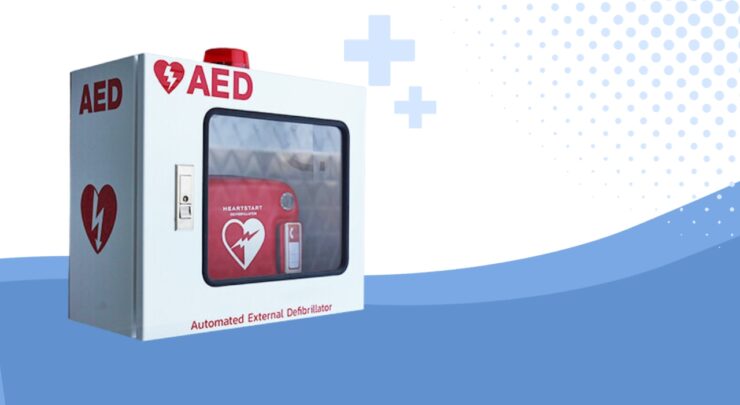
AEDs play a central role in addressing life-threatening cardiac conditions like ventricular fibrillation, and administering electric shocks to reinstate regular heart rhythms.
Grasping AEDs’ integral role and functionalities is crucial for augmenting CPR’s overall effectiveness. Detailed knowledge and the correct application of AEDs, including proper pad placement and adherence to voice prompts, are essential to optimize resuscitative efforts, potentially overturning a cardiac arrest.
This understanding broadens the scope of immediate intervention, giving victims a higher chance at survival and eventual recovery.
Choking Emergencies
Quickly recognizing choking, visible through signs like the inability to talk or breathe, is pivotal. Understanding the symptoms’ variability across different ages is crucial for deploying appropriate and effective interventions swiftly. Applying the abdominal thrusts method, or the Heimlich maneuver, is the preferred approach for alleviating choking.
Mastery in executing this technique is crucial for efficaciously clearing airway blockages. Furthermore, the awareness and implementation of varying interventions according to the victim’s age and condition can significantly influence the success rate of the rescue efforts.
Special Considerations for Children and Infants
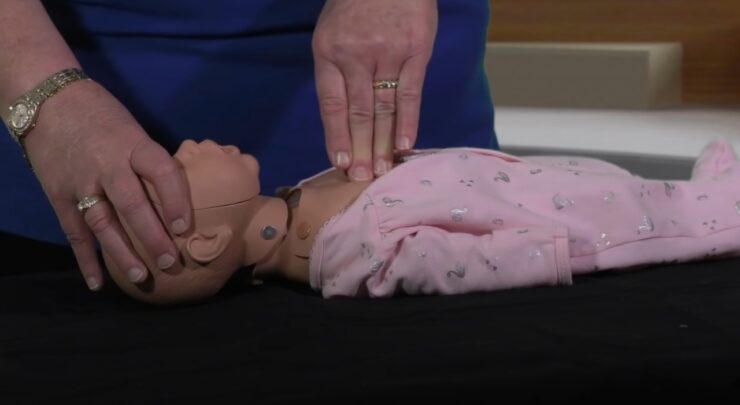
When delivering CPR to children and infants, adapting techniques, including altering compression depth and hand positioning, is requisite for effective resuscitation. Strict adherence to the stipulated ratios and depth guidelines is indispensable in pediatric CPR.
Maintaining awareness and conformity with these nuanced variations is pivotal for achieving the best possible outcomes in resuscitating children and infants. These adaptations ensure that the vulnerable demographic receives the most accurate and suitable form of intervention, maximizing the chances of a positive outcome.
Legal and Ethical Aspects of CPR
The comprehension of Good Samaritan laws is vital. These laws offer protection to individuals administering CPR, engendering a sense of security and prompting more people to intervene in emergencies. Discerning the nuances of consent in emergency situations is imperative.
The principle of implied consent presumes approval from unresponsive victims, thereby safeguarding the legal and ethical boundaries during life-saving interventions. These laws serve as a protective shield, encouraging bystanders to act without the fear of legal repercussions, thus fostering a proactive response culture.
CPR Certification and Re-Certification
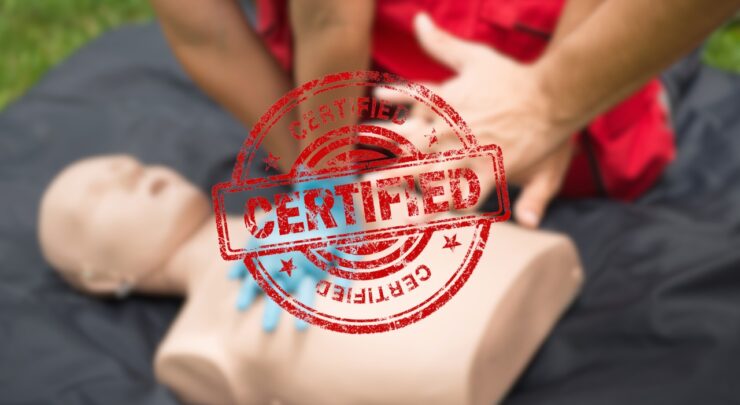
Achieving certification necessitates rigorous training and successful completion of assessments. An in-depth understanding of the certification process is essential for those aspiring to gain CPR skills and knowledge.
Regular re-certification is paramount to retaining skills and staying abreast of the latest techniques, enabling effective intervention during cardiac emergencies.
Furthermore, it underlines the continual commitment to learning and mastery of life-saving skills, ensuring that individuals are always prepared and adept at providing immediate assistance.
Real-life Scenarios and Hands-on Practice
Participation in simulated scenarios is invaluable for acquiring proficiency in CPR. These simulations offer realistic experiences, fostering the development of confidence and competence in executing CPR effectively.
Engaging with manikins during practical sessions is an integral aspect of CPR training. It provides aspiring lifesavers with opportunities to refine their skills meticulously, ensuring they are equipped to administer CPR in real-life exigencies.
This hands-on approach solidifies theoretical knowledge, translating it into actionable skills that can be reliably employed when faced with a real-life emergency.
Conclusion
CPR classes equip individuals with essential life-saving skills, offering insights into recognizing cardiac emergencies, performing CPR, and using AEDs.
The amalgamation of theoretical knowledge and practical skills fosters a comprehensive understanding of resuscitation, enabling participants to respond quickly to cardiac emergencies, potentially making the difference between life and death.

